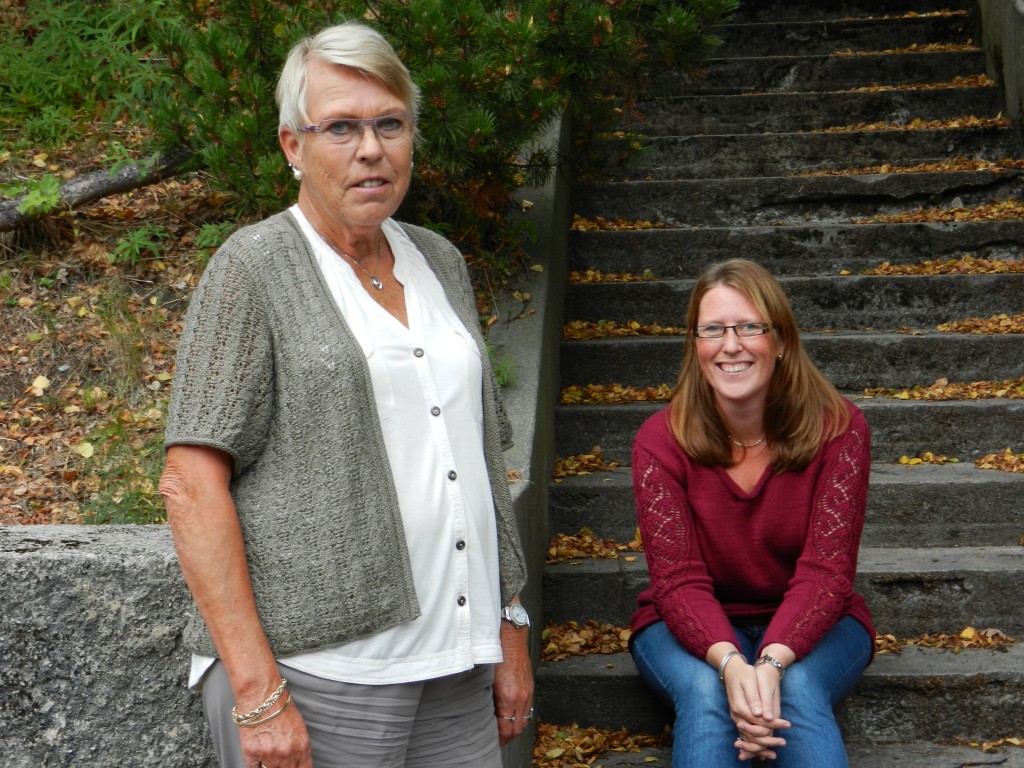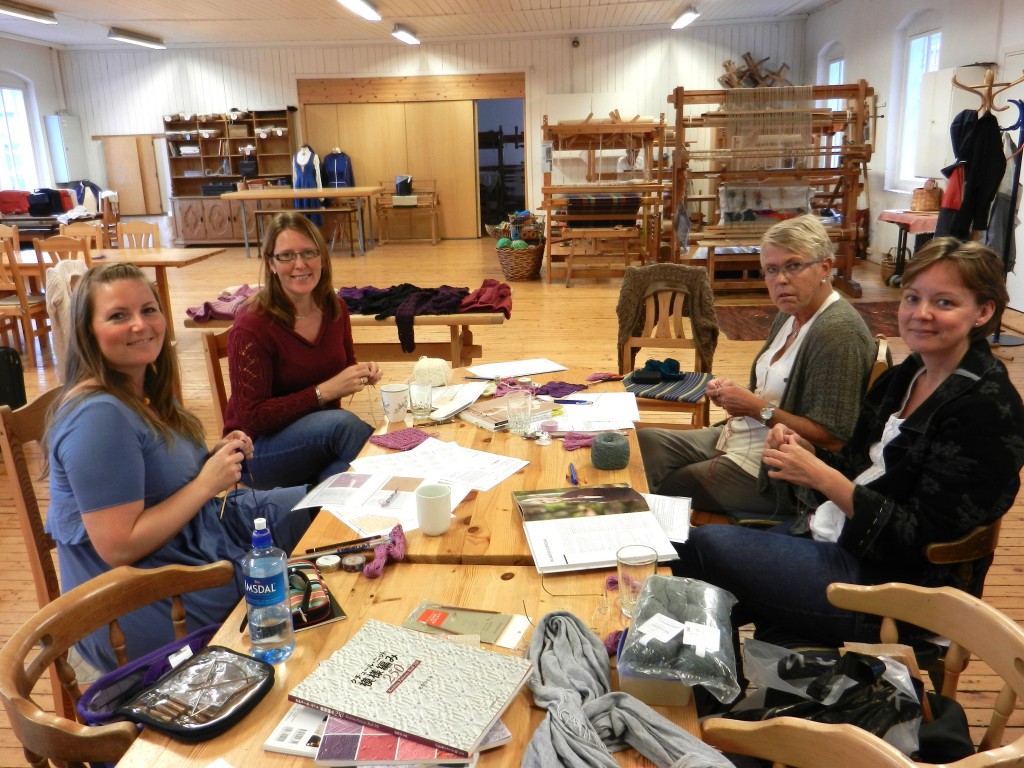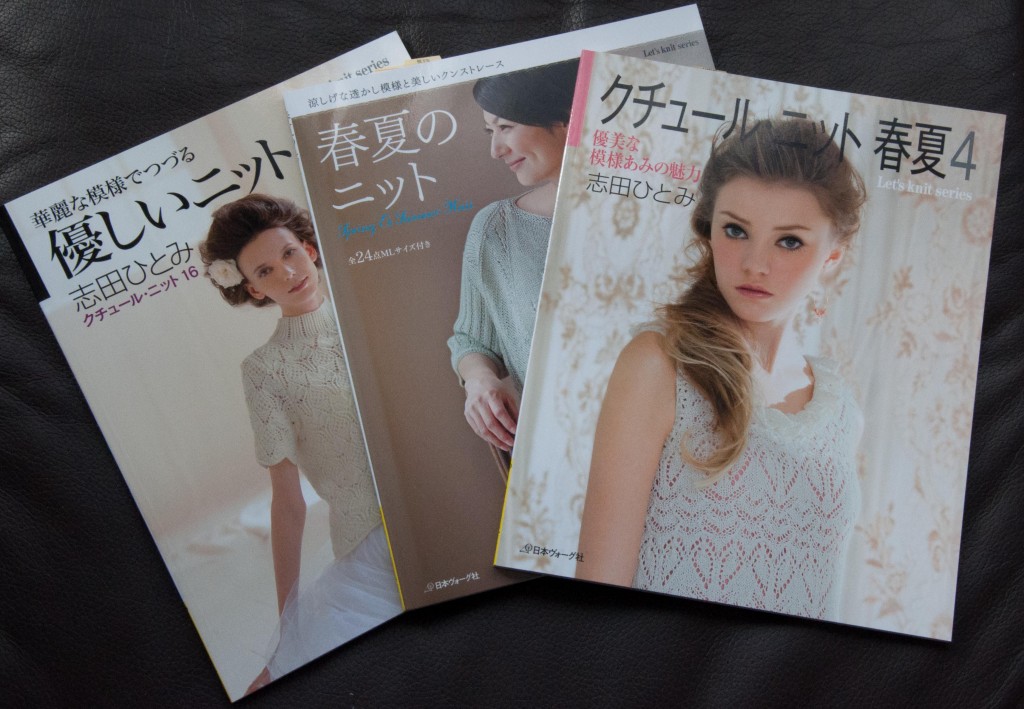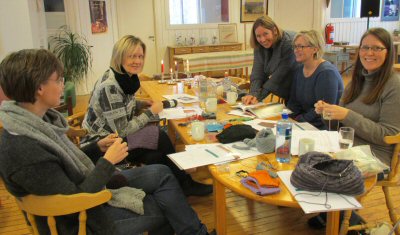 My Japanese Patterns workshop was a success, and I enjoyed every minute just as everyone else present. To my delight Nina Hove Myhre, the study leader from Larvik Husflidslag was wearing my design; the Summer Leaves Sweater which she recently test knitted, and Inger Kamfjord Andersen was wearing her first – yes, she is already making her second in purple – Morbærsilkejakke/Mulberry Silk Jacket from my book. As if that was not enough, Kari-Mette Rolsø had brought yarn and started knitting my Milanese Lace Shawl/Milanesisk-Blondesjal while Karianne Karlsen was working on the swatch for my Regal Purple Jacket. So with my head in the clouds, we began our workshop at the marvelous premises next to Larvik Museum. Japanese patters are extremely detailed when it comes to numbers stated in the schematic, we all agreed and found them easier to understand than ordinary written patterns. You can have a look, at all the Japanese books & magazines, and also find the excellent free pdf “Interpreting Japanese Knitting Patterns” here: needleartsknitting. It is definitely an advantage to see inside the books before you buy them so do take a look at the acknowledged Japanese publisher here: nihonvogue. And of course there is a link directly to YesAsia, where I have bought most of my selection…
My Japanese Patterns workshop was a success, and I enjoyed every minute just as everyone else present. To my delight Nina Hove Myhre, the study leader from Larvik Husflidslag was wearing my design; the Summer Leaves Sweater which she recently test knitted, and Inger Kamfjord Andersen was wearing her first – yes, she is already making her second in purple – Morbærsilkejakke/Mulberry Silk Jacket from my book. As if that was not enough, Kari-Mette Rolsø had brought yarn and started knitting my Milanese Lace Shawl/Milanesisk-Blondesjal while Karianne Karlsen was working on the swatch for my Regal Purple Jacket. So with my head in the clouds, we began our workshop at the marvelous premises next to Larvik Museum. Japanese patters are extremely detailed when it comes to numbers stated in the schematic, we all agreed and found them easier to understand than ordinary written patterns. You can have a look, at all the Japanese books & magazines, and also find the excellent free pdf “Interpreting Japanese Knitting Patterns” here: needleartsknitting. It is definitely an advantage to see inside the books before you buy them so do take a look at the acknowledged Japanese publisher here: nihonvogue. And of course there is a link directly to YesAsia, where I have bought most of my selection…
I had selected a number of my favourite swatches from the stitch dictionaries, which they had a go at, after we had studied how the Japanese write their knitting patterns. Nina had brought her selection of Japanese books as well, so we spent quite a bit of time studying them all. We agreed that the stitch patterns, as well as garments, are exquisite and mind blowing at times! I had a wonderful day in such great company!



